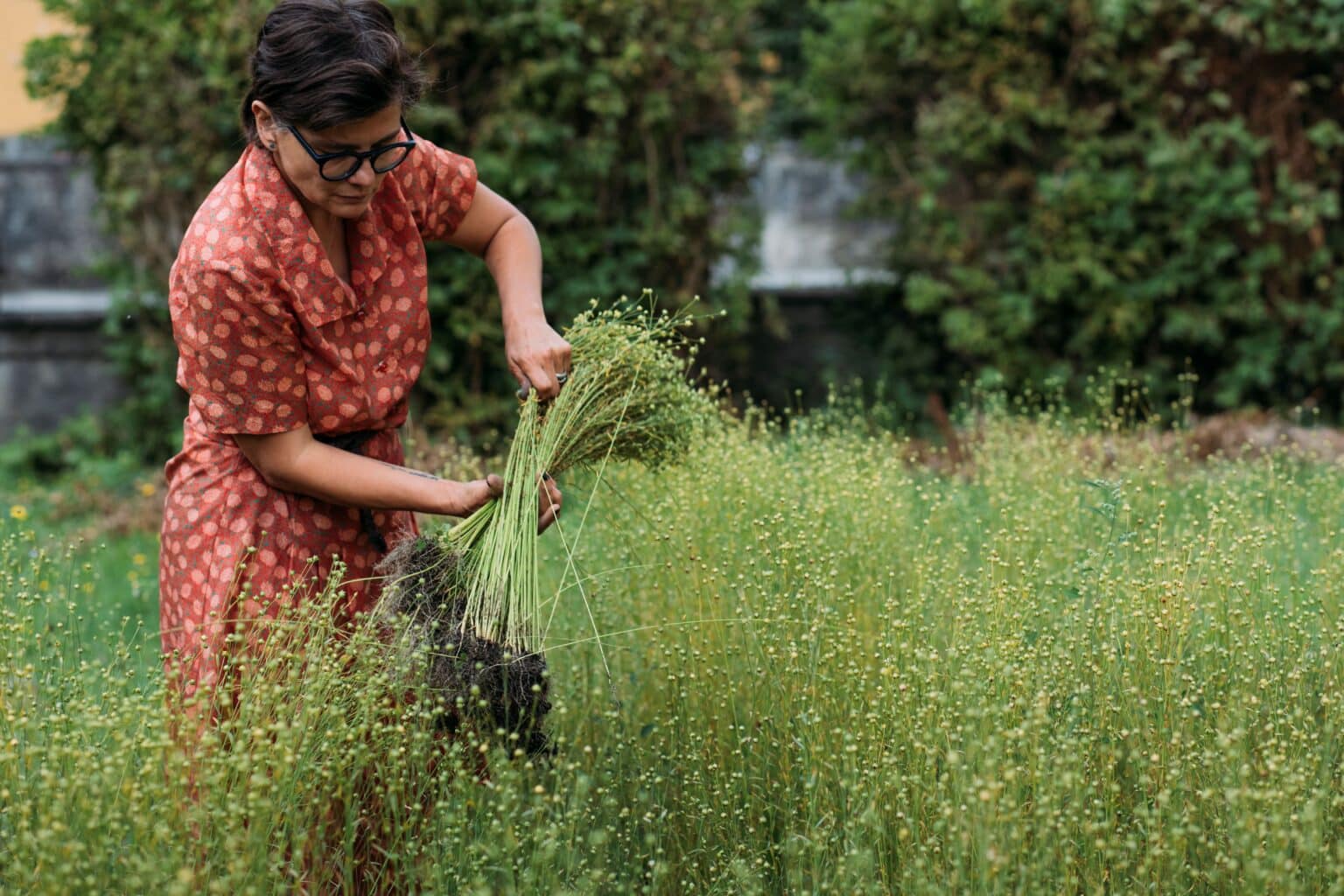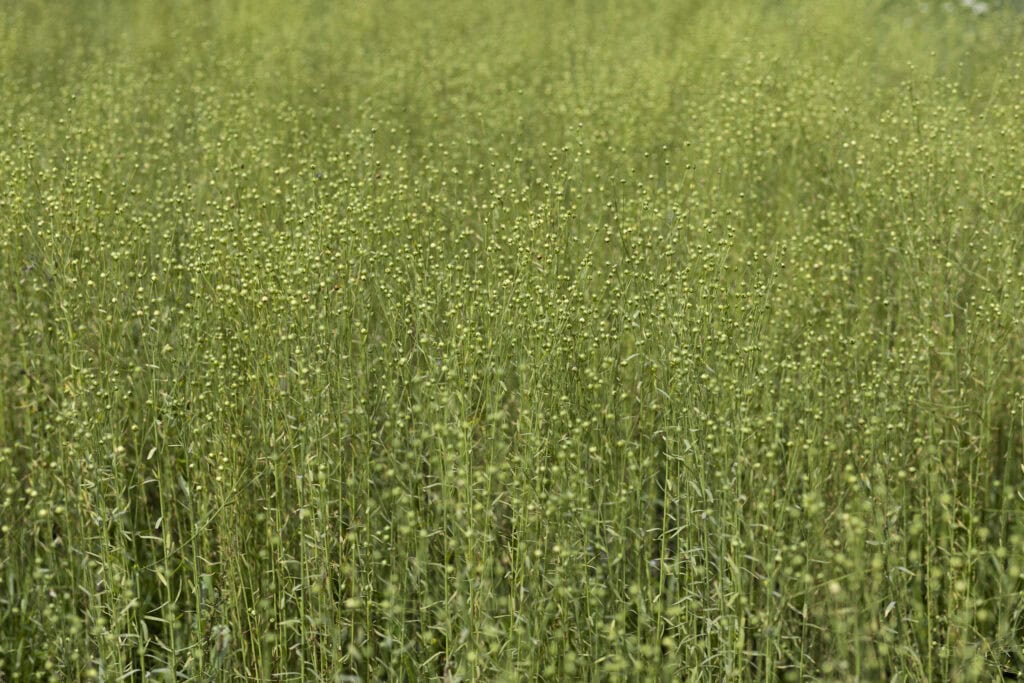Now the most important phase of the flax year begins: the harvest. Flax is not mowed, but pulled out of the ground by the roots - this preserves the valuable fibres. Ideally, the harvesting work is done in pairs: one person pulls the stalks, the other ties them into small bundles and sets them up to dry as chapels. Alternatively, the bundles can also be hung upside down over a fence
When it rustles, it ripples
As soon as the seed capsules begin to rustle, the crop can be harvested. The so-called riffling - i.e. the stripping of the capsules - is done with a riffling iron. If you don't have one, you can use a sturdy comb made of wood or metal to strip the capsules. The seeds that are not fully ripe are laid out to dry and the stalks are either stored or taken straight back to the field for roasting.
Ripening seeds - but the right way
For high-quality seeds, the capsules need time to ripen. Loosely laid on a sheet and dried in the sun, they gradually open. Caution: Never place them in heaps - the heat could destroy their germination capacity!
Collecting and storing seeds correctly
When the capsules are crumbly, they are threshed, crushed or rubbed with the hands. Residual husks are hardly a problem with seeds - but clean grain is important for oil production. The husks only need to be separated before sowing in spring - until then, it is best to store everything together.



